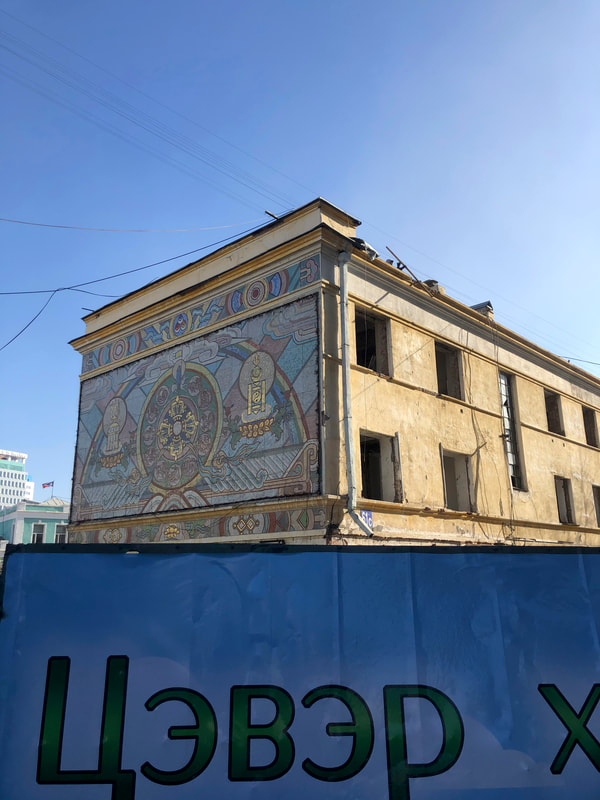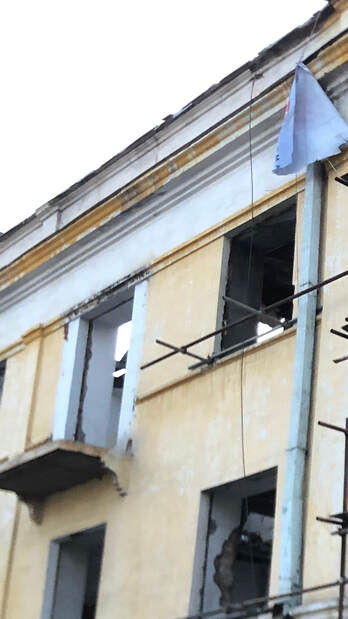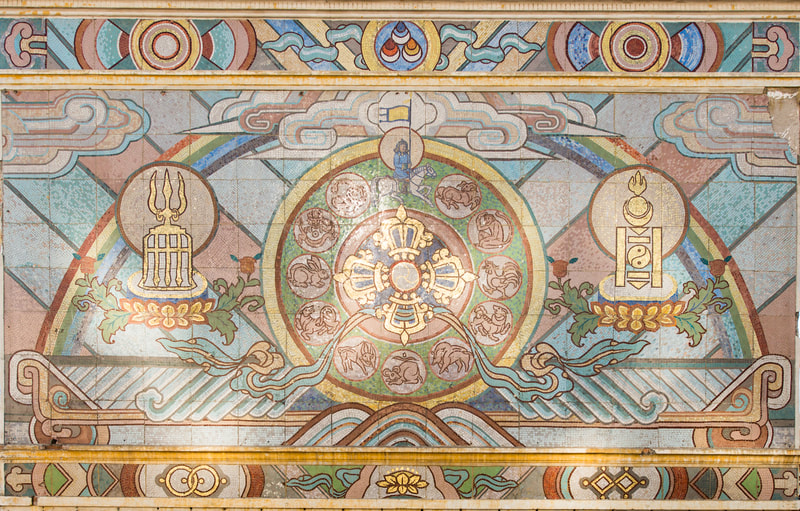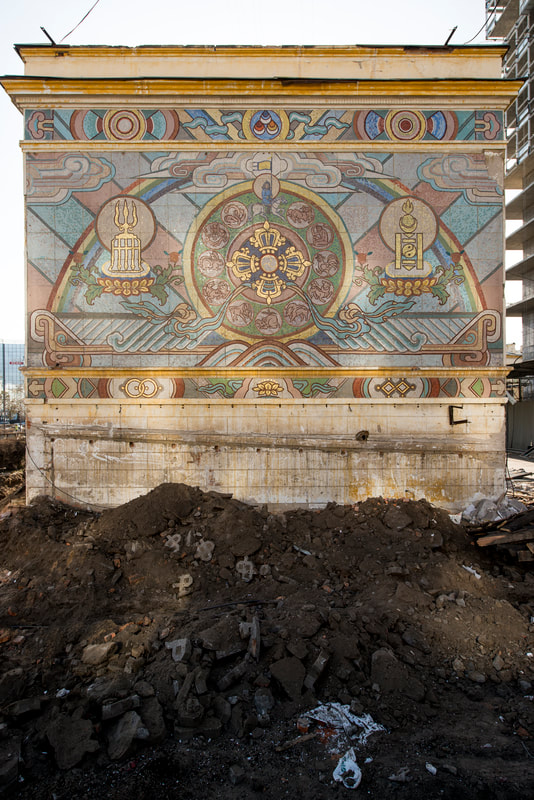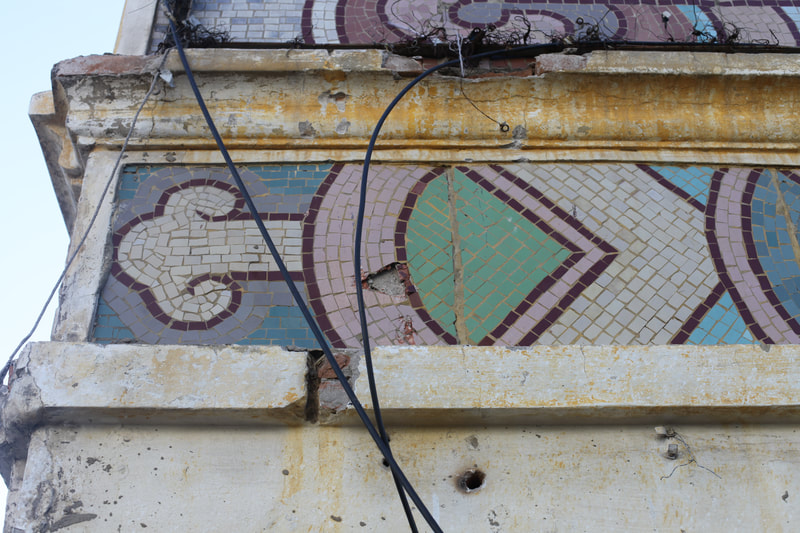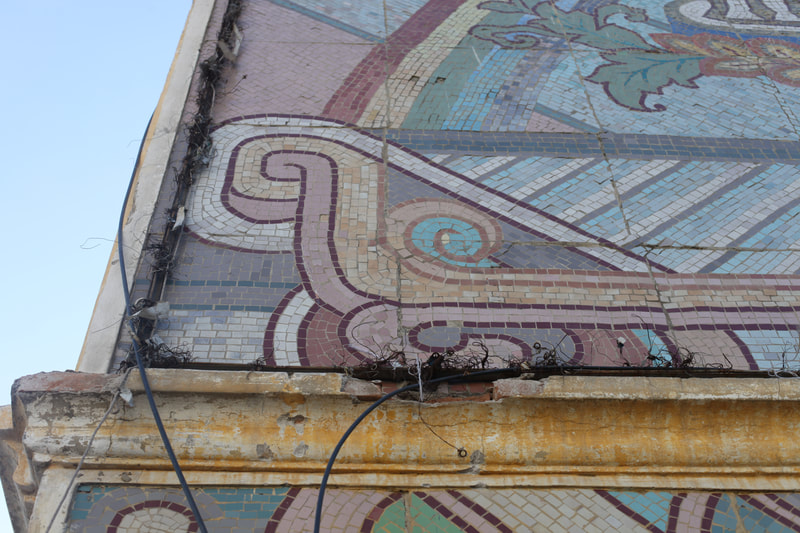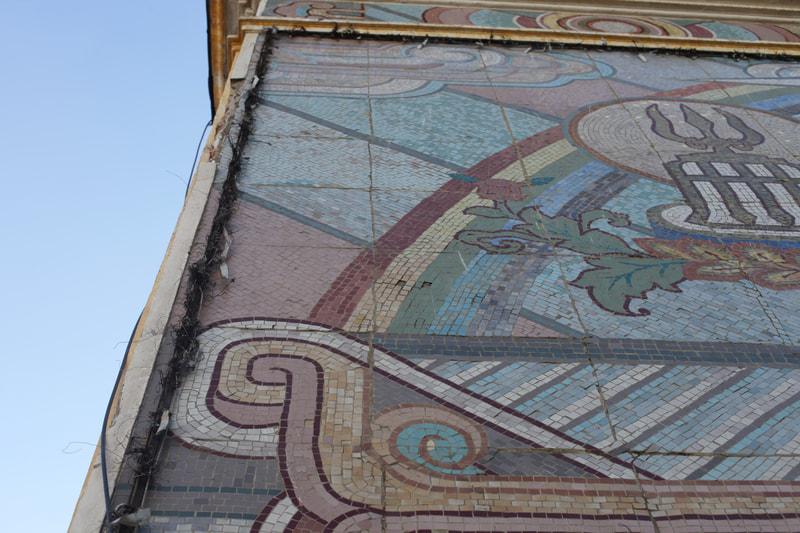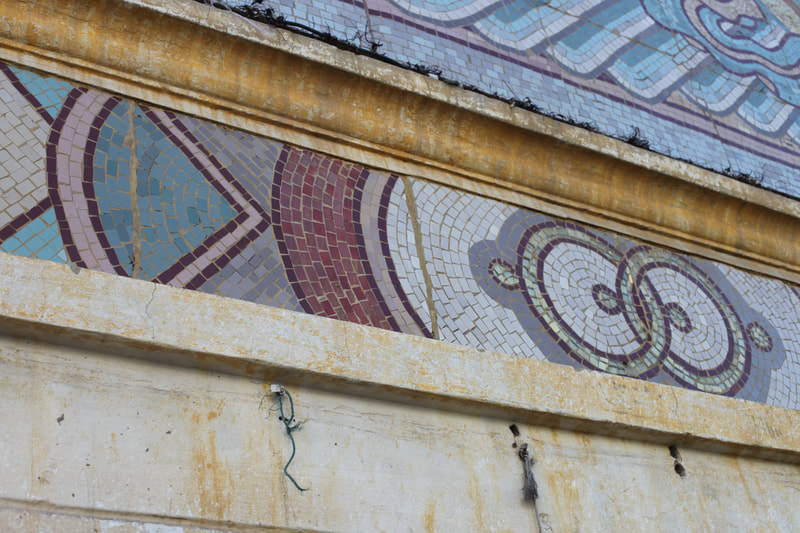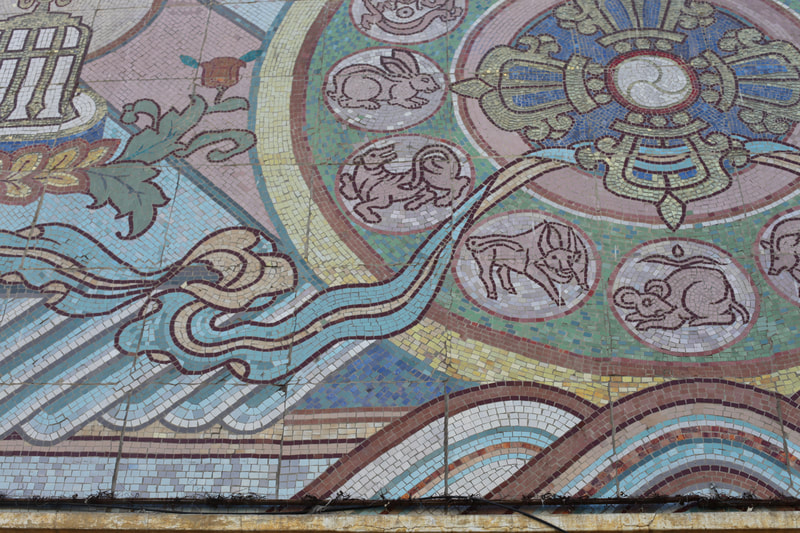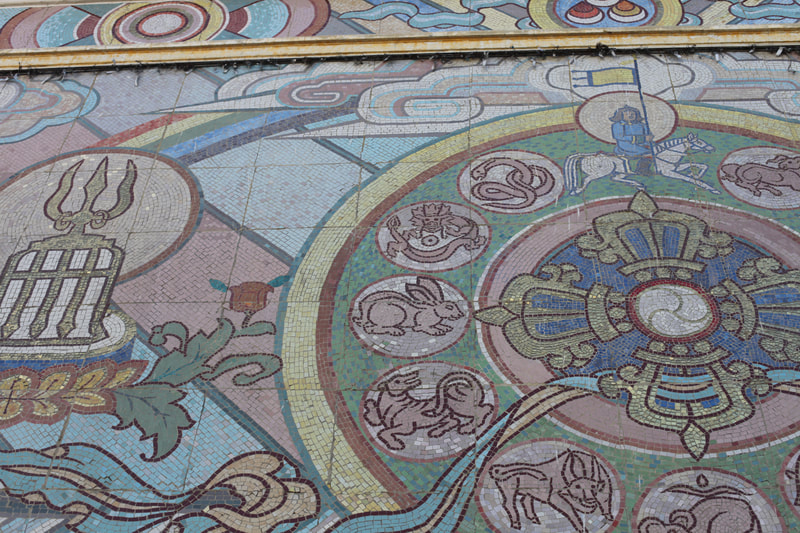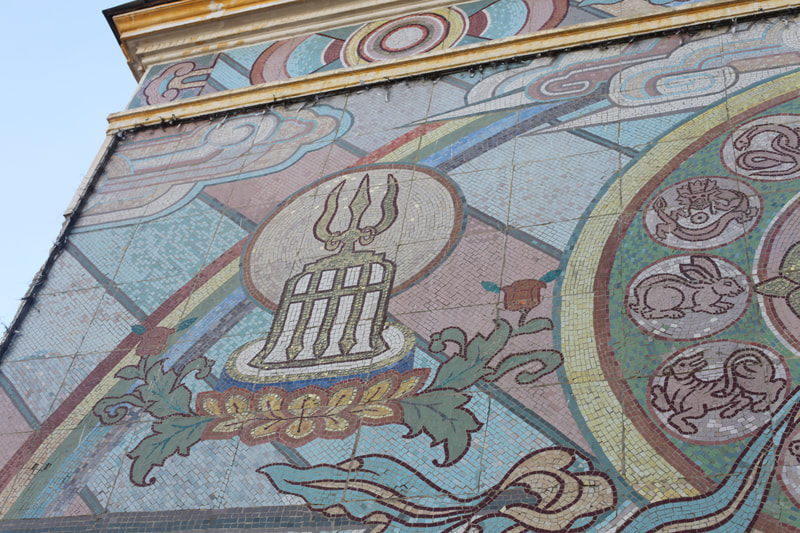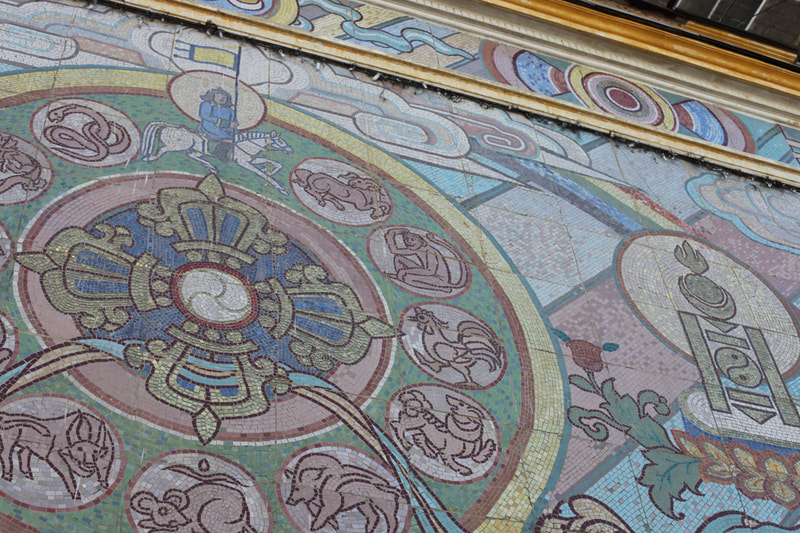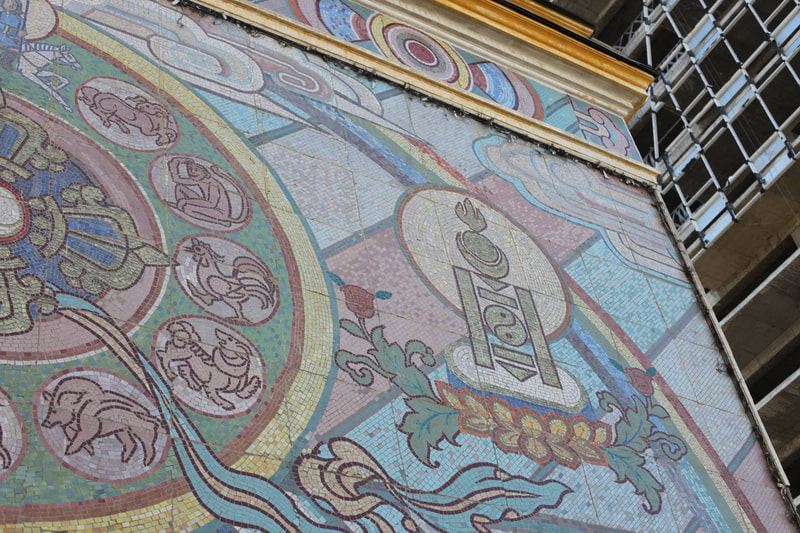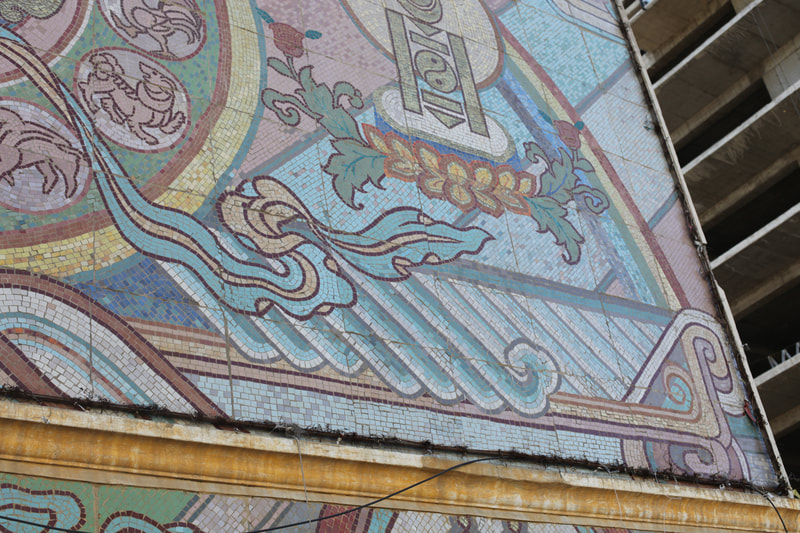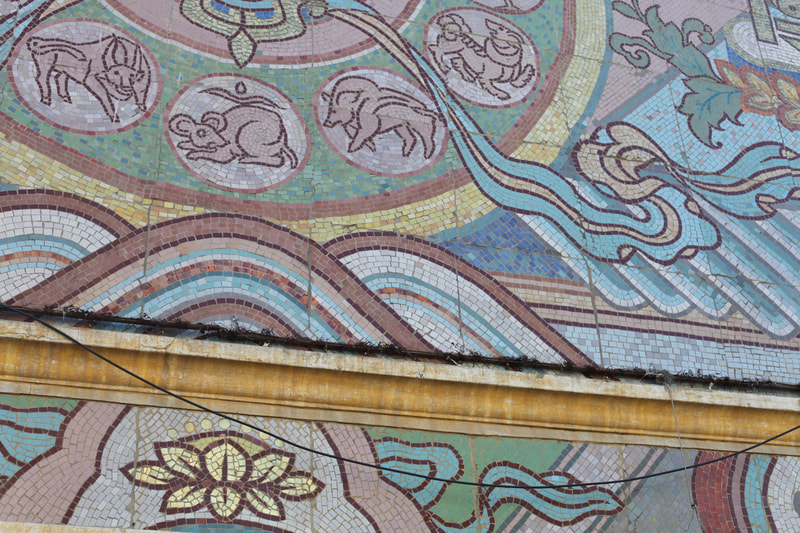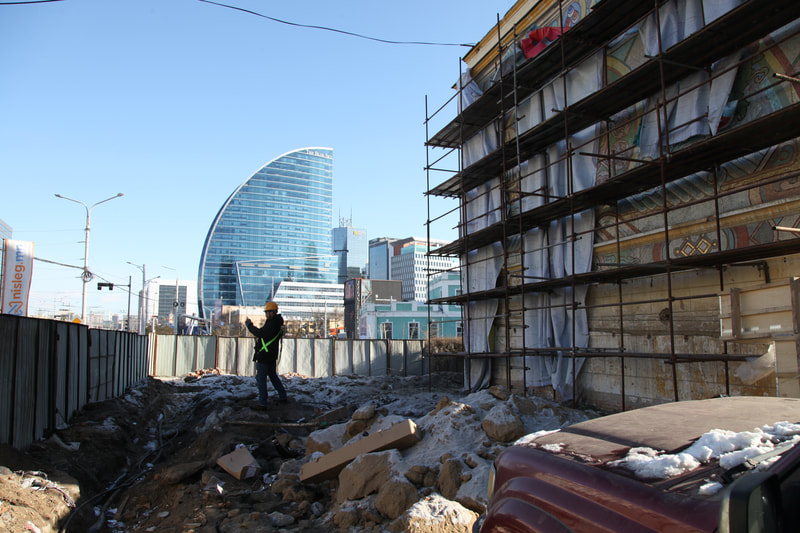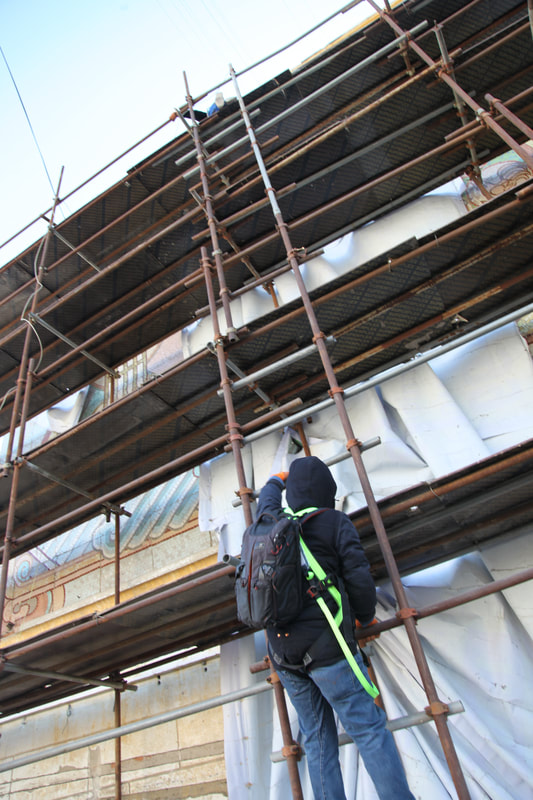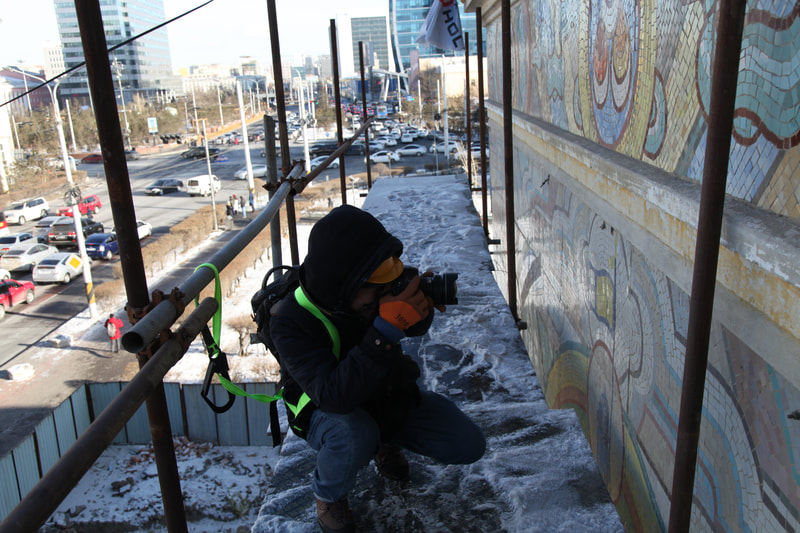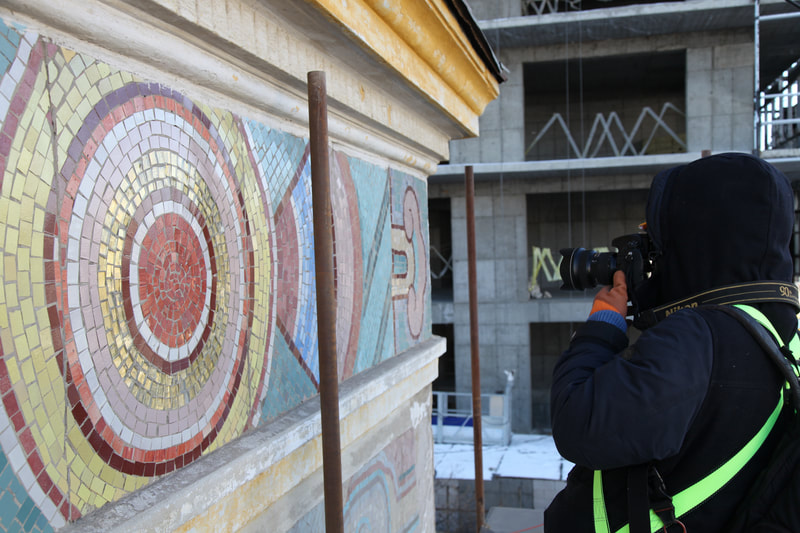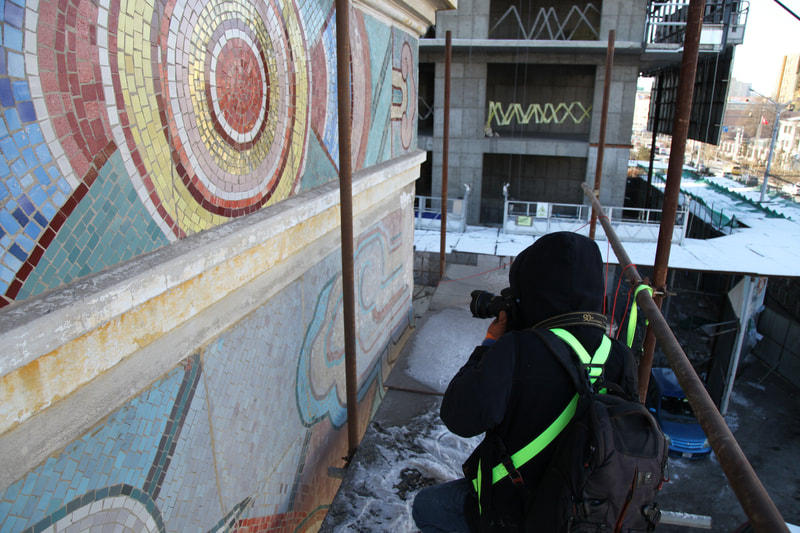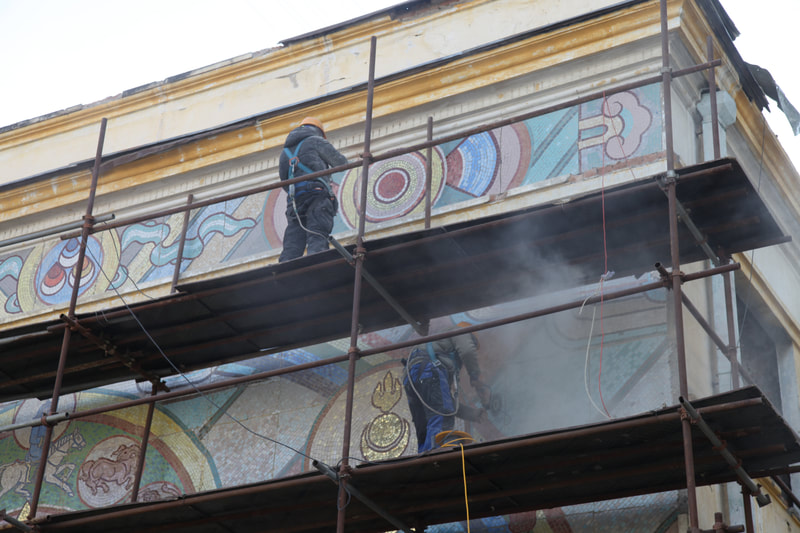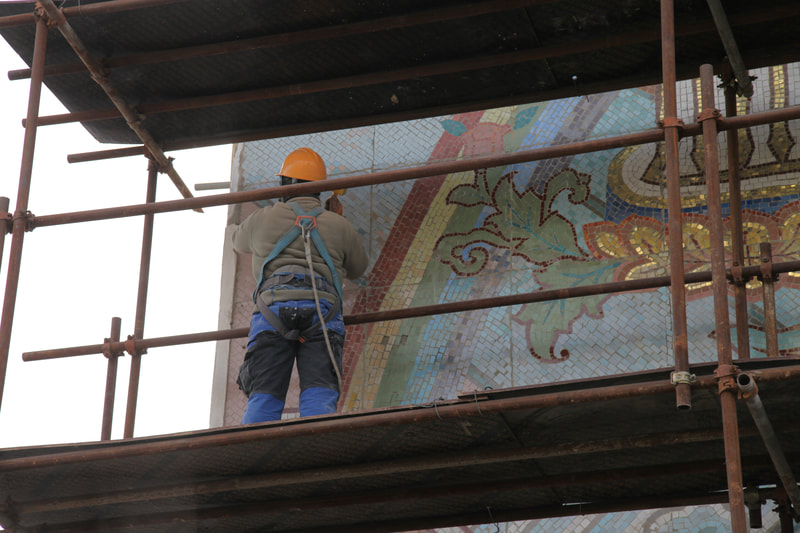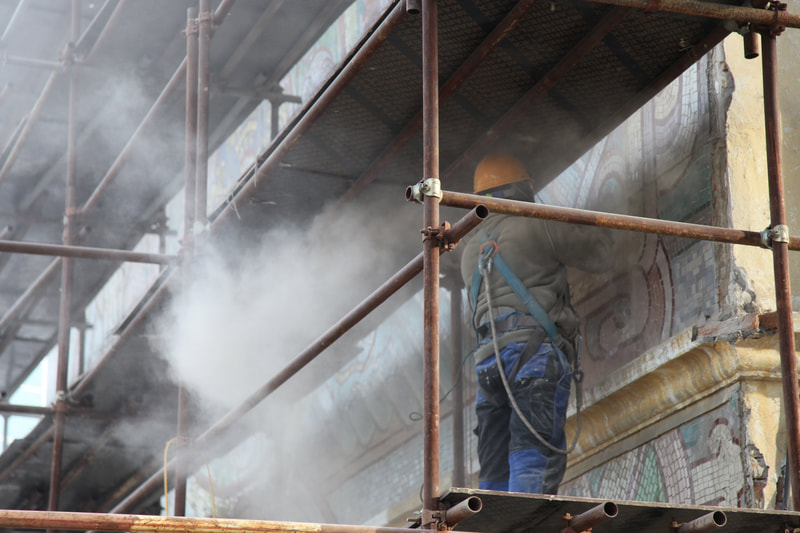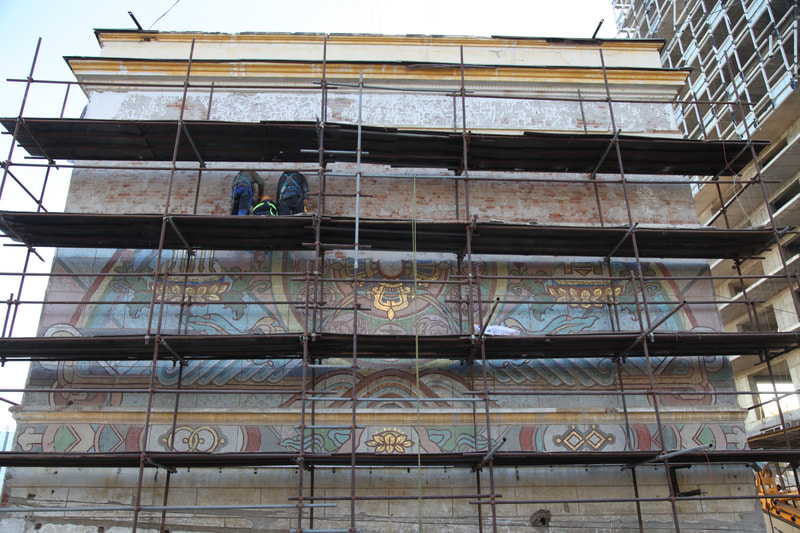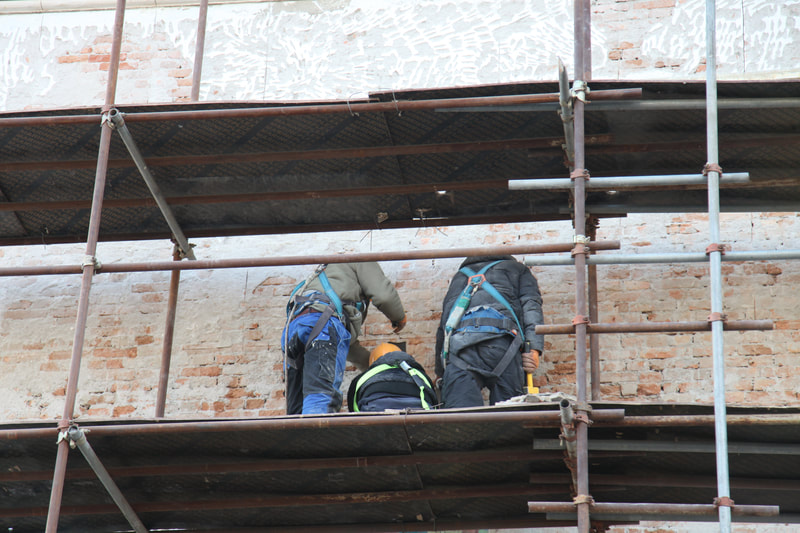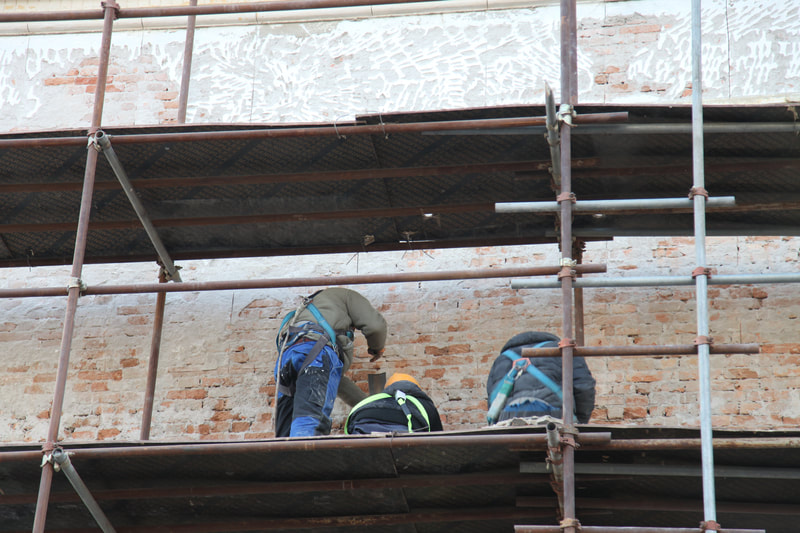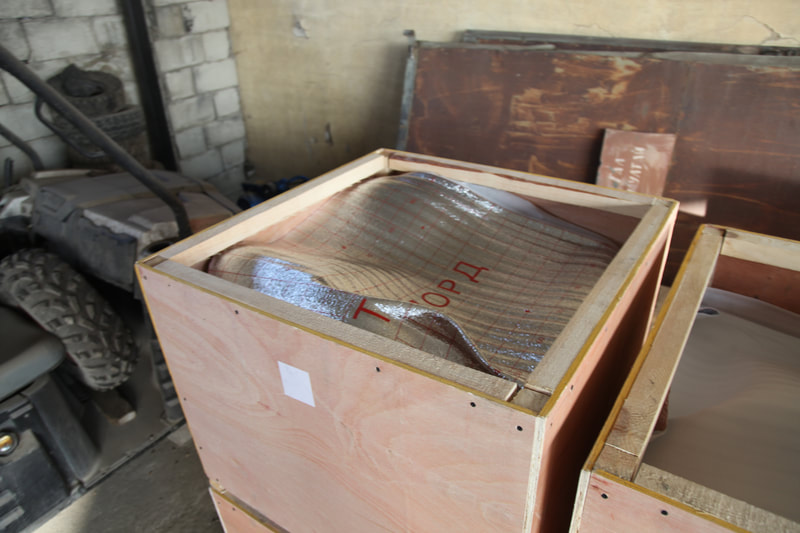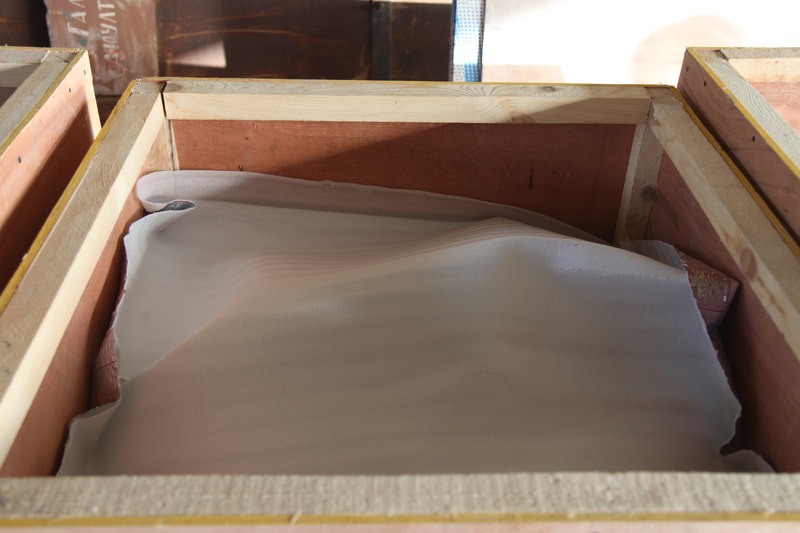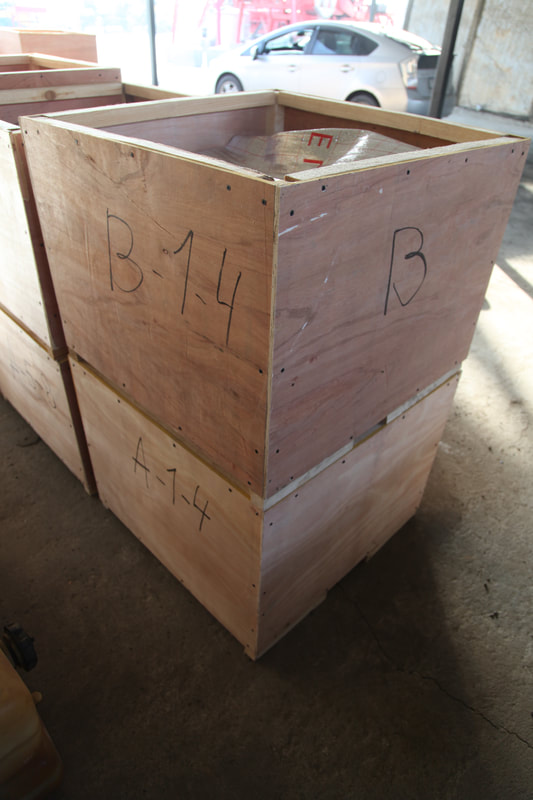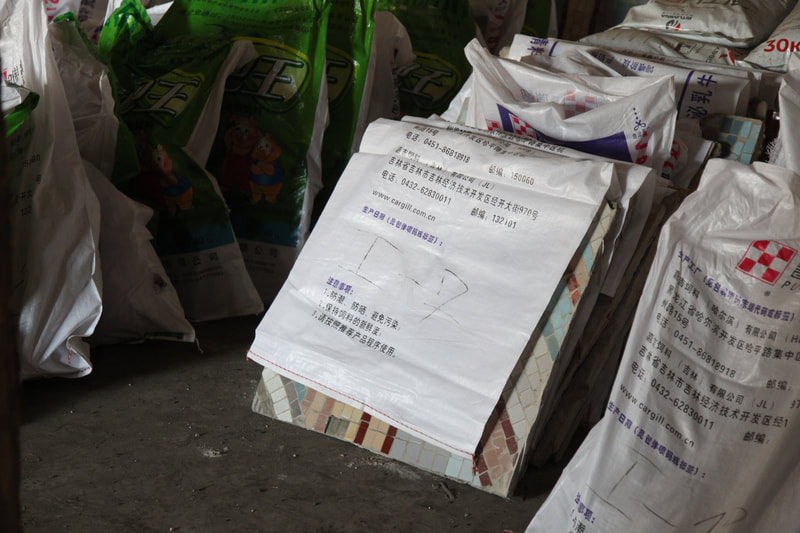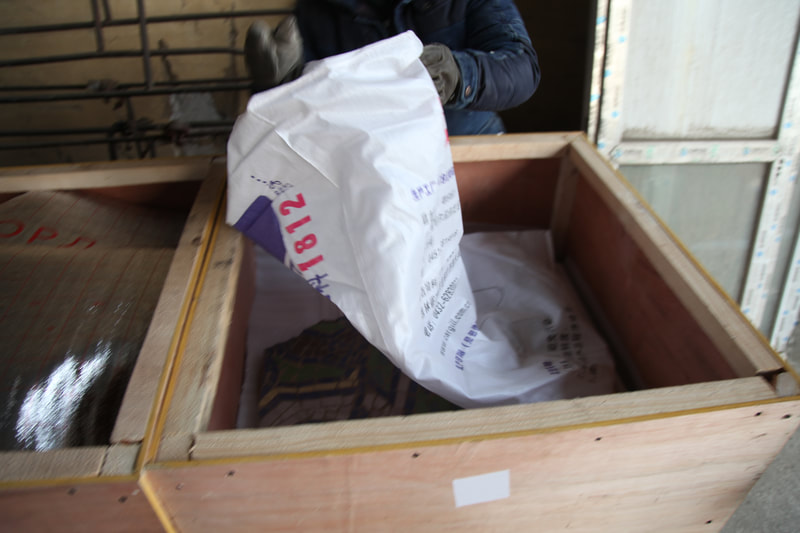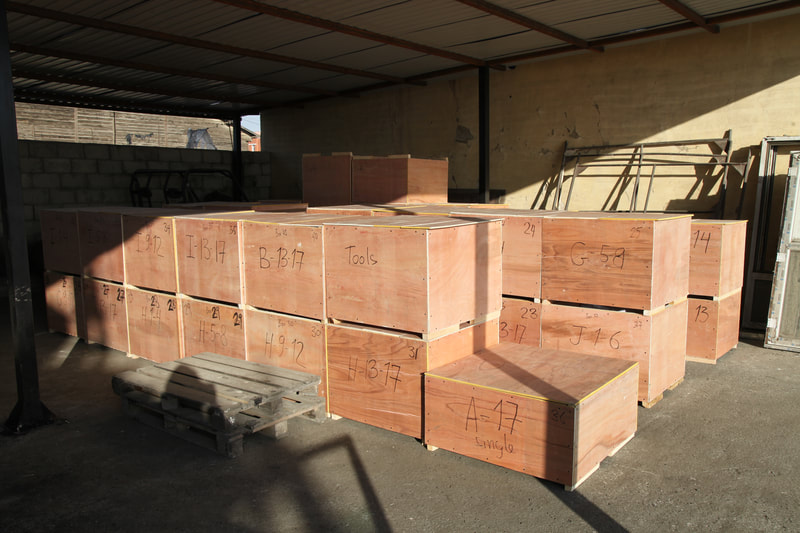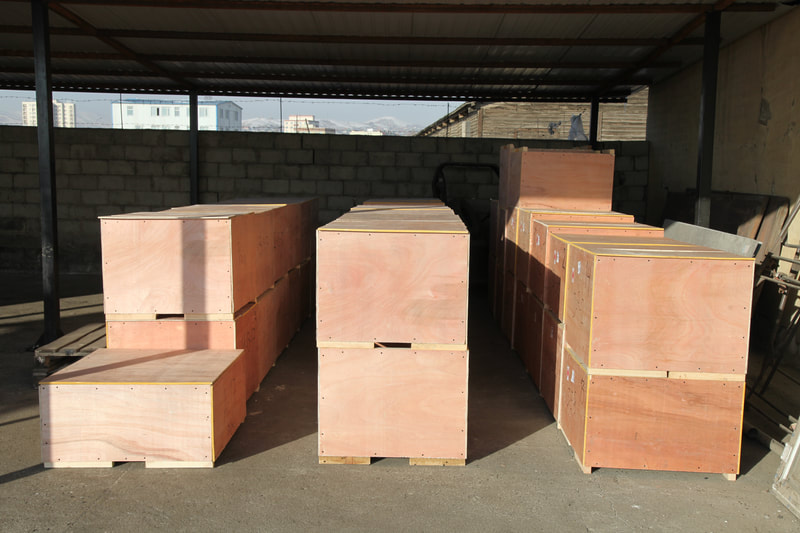Start-Up In WHITE HORSE YEAR /ЦАГААН МОРИН ЖИЛИЙН ГАРАА
Mosaic Conservation Project is proudly supported by / Мозайк Хамгаалах Төслийн дэмжигч
Bodhi Dharma Foundation / Бодь Дарма Сан
December 10-20 2019
Abstract: The resurgence of mosaic conservation practices in Mongolia is underway. Presently, mosaics are often approached as discrete artifacts devoid of their original contexts, resulting in insufficiently comprehensive interventions. The range of available conservation strategies is constrained due to the influence of recent private urbanization trends, frequently necessitating detachment as the primary recourse. The conservation workforce primarily comprises artisans, craftspeople, and carpenters. The selection of materials is restricted. As the team races against time, traditional conservation procedures may be subject to compromise.
THE INTERVENTION FOR THE CONSERVATION OF THE MOSAIC
The in-situ conservation of mosaics does not align with the project intentions of the property owners. To prepare for potential emergency conservation measures, we extended invitations to auxiliary parties, including representatives from governing entities. Regrettably, these entities displayed minimal interest in potential interventions. A sudden demolition notice prompted us to swiftly transition to new methods of emergency detachment within a mere week. Additionally, adverse weather conditions hindered the implementation of proper in-situ conservation protocols.
The in-situ conservation of mosaics does not align with the project intentions of the property owners. To prepare for potential emergency conservation measures, we extended invitations to auxiliary parties, including representatives from governing entities. Regrettably, these entities displayed minimal interest in potential interventions. A sudden demolition notice prompted us to swiftly transition to new methods of emergency detachment within a mere week. Additionally, adverse weather conditions hindered the implementation of proper in-situ conservation protocols.
Building Number 61, holds historical significance as one of the earliest communal apartments in the capital, built around 1945. It served as the residence for various administrative and social figures of its time. Strategically situated southwest of the central square, the building's prominent location is adjacent to the central post office. Over the years, the southern wall of this apartment complex became a canvas for numerous socialist propaganda advertisements and banners. However, in 1990, following the democratic revolution, the Union of Mongolia’s Artists initiated an open competition to commemorate the nation's newly established reform and democracy.
The winning design, conceived by Galsandorj.E, earned the privilege of materialization. This mosaic monument, titled "Start-Up In WHITE HORSE YEAR /ЦАГААН МОРИН ЖИЛИЙН ГАРАА/," seamlessly integrates traditional Mongol zurag techniques with archaic and religious motifs. The designated canvas for this artwork was the southern wall of Building Number 61, covering an expansive 135 square meters. Notably, this endeavor took shape in the early 1990s, a period marked by economic constraints in the country. With most government affiliates grappling with financial limitations, cost-efficient materials became imperative for the creation of such a large-scale mural. Thus, the chosen medium was tiles originally intended for the decorative facades and interiors of Soviet-era prefab constructions.
However, the narrative took a turn in September 2019 when the building was sold for a redevelopment initiative. This transition imposed a pressing deadline of November 20th, 2019, for the conservation of the mosaic.
The winning design, conceived by Galsandorj.E, earned the privilege of materialization. This mosaic monument, titled "Start-Up In WHITE HORSE YEAR /ЦАГААН МОРИН ЖИЛИЙН ГАРАА/," seamlessly integrates traditional Mongol zurag techniques with archaic and religious motifs. The designated canvas for this artwork was the southern wall of Building Number 61, covering an expansive 135 square meters. Notably, this endeavor took shape in the early 1990s, a period marked by economic constraints in the country. With most government affiliates grappling with financial limitations, cost-efficient materials became imperative for the creation of such a large-scale mural. Thus, the chosen medium was tiles originally intended for the decorative facades and interiors of Soviet-era prefab constructions.
However, the narrative took a turn in September 2019 when the building was sold for a redevelopment initiative. This transition imposed a pressing deadline of November 20th, 2019, for the conservation of the mosaic.
THE PLAN
The plan compromised section described the principle theories and methods of the initiation ( on-site detachment, use of traditional materials and techniques, admittance of the public, full documentation of the work as carried out and distribution of information ). It followed by the section analyses of each part of the mosaic. The visual documentation of the state of conservation, details of the work to be carried out, estimated time and full financial costs were determined in this part. Using the plan client can make a financial and technical evaluation of the offer, contract documentation and required authorization from the superintendent was obtained.
From the technical point of view, the plan allows us to allocate resources, write up the work schedule, organize the purchase of materials and equipment. To do this, we drew up tables to be filled in daily, showing the date, floor number, technical operations, conservator's name, hours of work. The data thus collected became instrumental in drawing up new plans. They can be distributed and will enrich the files needed to plan the conservation and maintenance of other mosaics. Conservation team paid a visit to the site on November 13, after careful inspection of the mosaic, the team officials agreed it would be impossible to preserve it fully in this cold climate, as well as the high cost of implementing and managing them afterward. We had limited options because the main support structures of the building number 61 have already been demolished from inside, making the mosaic wall in a vulnerable state of collapse at any given time.
The plan compromised section described the principle theories and methods of the initiation ( on-site detachment, use of traditional materials and techniques, admittance of the public, full documentation of the work as carried out and distribution of information ). It followed by the section analyses of each part of the mosaic. The visual documentation of the state of conservation, details of the work to be carried out, estimated time and full financial costs were determined in this part. Using the plan client can make a financial and technical evaluation of the offer, contract documentation and required authorization from the superintendent was obtained.
From the technical point of view, the plan allows us to allocate resources, write up the work schedule, organize the purchase of materials and equipment. To do this, we drew up tables to be filled in daily, showing the date, floor number, technical operations, conservator's name, hours of work. The data thus collected became instrumental in drawing up new plans. They can be distributed and will enrich the files needed to plan the conservation and maintenance of other mosaics. Conservation team paid a visit to the site on November 13, after careful inspection of the mosaic, the team officials agreed it would be impossible to preserve it fully in this cold climate, as well as the high cost of implementing and managing them afterward. We had limited options because the main support structures of the building number 61 have already been demolished from inside, making the mosaic wall in a vulnerable state of collapse at any given time.
DOCUMENTATION
Documentation is the first operation carried out on-site: each mark on the mosaic's surface is classified and represented graphically on specific, pre-arranged drawings. The process starts by entering the state of conservation (the type of decay) of the mosaic, de-tails of the original techniques of making the mosaic, in addition, the historic life of the building (uses, restorations, collapse). Documentation continues throughout the intervention, entering the operations carried out when removing the frames of the advertisement.
The list of the items observed during the documentation.
Carbonate deposits
Decohesion of tesserae
Deformations
Detachment in depth
Detachment of tesserae
Erosion between tesserae
Fractures
Scratches
Tesserae of glass paste
To obtain clear pictorial documentation, digital photographs were used as a base. It will help us to register data to study and understand the corrective measures to be carried out in preventive conservation.
Documentation is the first operation carried out on-site: each mark on the mosaic's surface is classified and represented graphically on specific, pre-arranged drawings. The process starts by entering the state of conservation (the type of decay) of the mosaic, de-tails of the original techniques of making the mosaic, in addition, the historic life of the building (uses, restorations, collapse). Documentation continues throughout the intervention, entering the operations carried out when removing the frames of the advertisement.
The list of the items observed during the documentation.
Carbonate deposits
Decohesion of tesserae
Deformations
Detachment in depth
Detachment of tesserae
Erosion between tesserae
Fractures
Scratches
Tesserae of glass paste
To obtain clear pictorial documentation, digital photographs were used as a base. It will help us to register data to study and understand the corrective measures to be carried out in preventive conservation.
Documentation of the mosaic
PREPARATION OF THE WORKSITE
The concentration of delicate walls, their high level of fragility and cold weather, aliened us to take preventive measures of applying protective textile and other alternative methods on the surface of the mosaic for the pre-detachment procedure.
The worksite was organized with marked paths; systems were set to supply electricity directly to the operators. On the Start-Up In WHITE HORSE YEAR mosaic, we built a structure holding four stories of movable bridges in metal and wood panels, spanning the width and height of the building. They were held by support based on the foundations of two opposite windows on the first and third floors of the building. This allowed two different teams to work simultaneously on different areas of the mosaic. These bridges were exposed to the public to view the mosaic and the conservator's scheduled works. This construction added one week to the planned work period, but it was created to ensure the protection of individuals and the work.
MAKING CUT TO DETACH PANEL'S
The concentration of delicate walls, their high level of fragility and cold weather, aliened us to take preventive measures of applying protective textile and other alternative methods on the surface of the mosaic for the pre-detachment procedure.
The worksite was organized with marked paths; systems were set to supply electricity directly to the operators. On the Start-Up In WHITE HORSE YEAR mosaic, we built a structure holding four stories of movable bridges in metal and wood panels, spanning the width and height of the building. They were held by support based on the foundations of two opposite windows on the first and third floors of the building. This allowed two different teams to work simultaneously on different areas of the mosaic. These bridges were exposed to the public to view the mosaic and the conservator's scheduled works. This construction added one week to the planned work period, but it was created to ensure the protection of individuals and the work.
MAKING CUT TO DETACH PANEL'S
DETACHMENT
|
Detachment process using custom made steel nails to penetrate between mosaic and the wall.
The inner and outer edges of each section of a mosaic that has been cut, lifted, re-laid on a registered crates for transportation and storage. The cutting lines may follow the mosaic’s decorative design (bottom photo), or they may not (top photo). The joints between the panels are generally filled with materials such as mortar (top photo) or tesserae to restore the continuity of the mosaic surface. The section of the mosaic surface that has been detached from the rest of the mosaic and removed from its place of origin (bottom photo) to be kept in a storage. |
Mosaic Project abstract in Mongolian Language / МОЗАЙК ХАМГААЛАЛТ ТӨСЛИЙН ТОВЧ ҮР ДҮН МОНГОЛ ХЭЛ |
| ||||||
